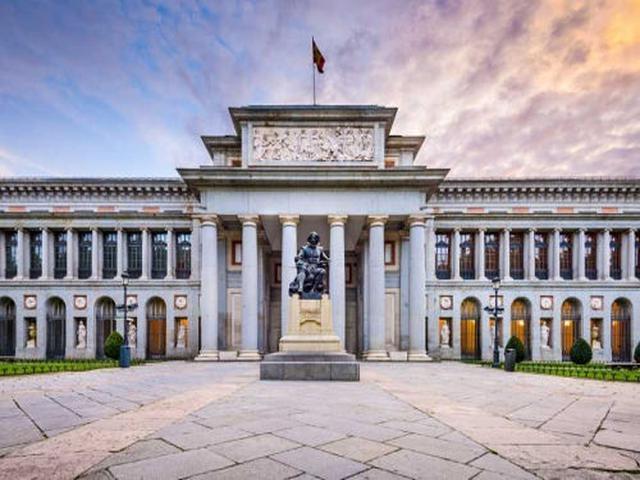Prado Museum

The Prado Museum, located in Madrid, Spain, is undoubtedly one of the most prestigious art museums in the world, attracting millions of visitors each year. Its collection is singularly rich in paintings by European masters from the 16th to the 19th centuries, making it a must-visit destination for art enthusiasts and history buffs alike. The museum's main attraction lies in the extensive presence of renowned artists such as Velázquez, El Greco, Goya, Titian, Rubens, and Bosch, whose works are showcased in the best and most extensive collections worldwide. In addition to these masters, the Prado also boasts outstanding groups of works by other important artists including Murillo, Ribera, Zurbarán, Rafael, Veronese, Tintoretto, Van Dyck, and Poussin, among others.
What sets the Prado Museum apart from other art galleries is its distinguished collection, which was primarily formed by a few art-loving kings who commissioned many of the works on display. The Royal Collection has been supplemented over the years by additional contributions, although efforts have been focused on reinforcing the museum's core rather than filling in gaps. This approach has helped maintain the museum's initial profile and preserve its unique character. The building that houses the Prado Museum was originally designed by José Moñino y Redondo, Count of Floridablanca, and First Secretary of State of King Carlos III, as the Royal Office of Natural History. The architectural project was approved by Charles III in 1786 and was executed by the renowned architect Juan de Villanueva, a key figure in Spanish Neoclassicism.
The construction of the museum took place during the reigns of Charles III and Charles IV, with the building being completed in the early 19th century. However, the museum's history was marked by the tumultuous events of the War of Independence, during which it was repurposed as a military barracks and fell into a state of disrepair. The lead sheets on the roofs were even melted down to make bullets, highlighting the museum's resilience and enduring significance in the face of adversity. Despite these challenges, the Prado Museum has emerged as a beacon of artistic excellence, showcasing some of the finest works of European art in a stunning architectural setting.
Visitors to the Prado Museum can immerse themselves in a world of artistic wonders, exploring masterpieces that span centuries and genres. From the hauntingly beautiful works of El Greco to the powerful and emotive paintings of Goya, the museum offers a comprehensive overview of European art history. Whether you're a seasoned art connoisseur or a casual admirer, a visit to the Prado Museum is sure to leave a lasting impression and deepen your appreciation for the beauty and complexity of the artistic world.
© ChatGPT 3.5
Free hours: Monday to Saturday from 6:00 p.m. to 8:00 p.m. / Sundays and holidays from 5:00 p.m. to 7:00 p.m.
The Museum's painting collection exceeds 8,600 works. Of them, just over 3,000 come from the Royal Collection, just over 2,000 from the Museum of the Trinity and the rest, more than 3,500, from the fund called New Acquisitions, which also includes those made by the Museum of the Trinidad and the paintings he received in 1971 from the Museum of Modern Art.
On November 19, 1819, the Royal Museum of Paintings (the museum's first name) was quietly inaugurated, showing some of the best pieces from the Spanish Royal Collections, transferred from the different Royal Sites.